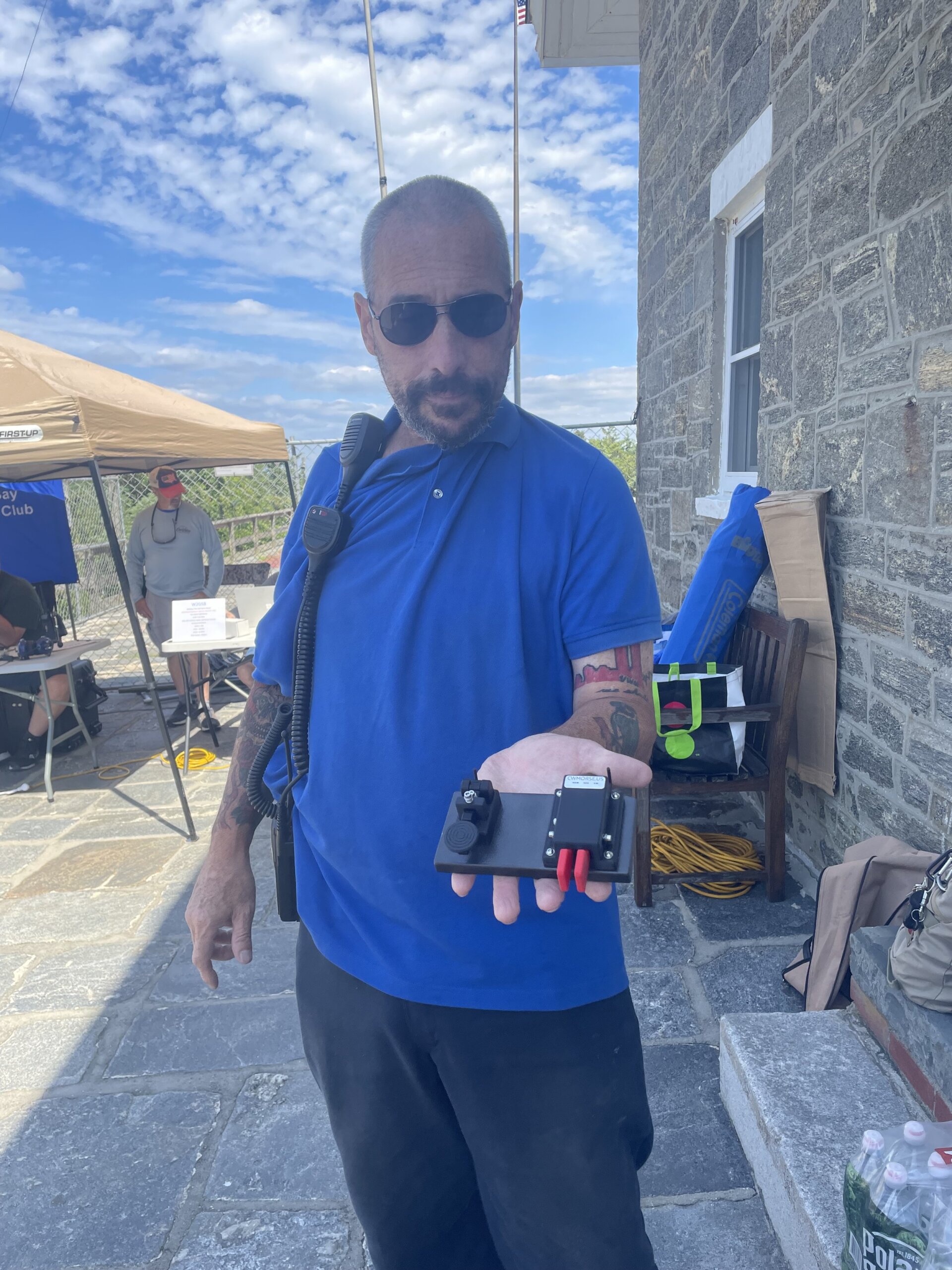
One of the hams showing off some equipment at Fire Island Lighthouse.
Around the world on the third week of August amateur radio operators set up portable stations at lighthouses to make contact with each other, and Fire Island Lighthouse took part in this worldwide phenomenon.
The International Lighthouse/Lightship Weekend (ILLW) came into being in 1998 in Scotland. Over 500 lighthouse entries in more than 40 countries are involved. It is one of the most popular International Radio Events in existence. This is not a contest but an opportunity to engage with people from all over the world. Ham radios and lighthouses have a natural connection as they both have been important tools of communication in navigational history.
The ham operators at the Fire Island Lighthouse were very eager to share all kinds of information about ham radios to the public. Each of them introduced themselves by their call names and introduced what ham radio they have as well as what it does. Ham radios do not rely on cell towers like most forms of communication does today. They only require a simple wire and radio to talk across town, around the world, or even into space without cell phones or the internet. The ionosphere is a layer of the earth’s atmosphere composed of electrical particles. Radio and GPS signals bounce off this layer to reach further destinations than sending a direct signal. It is fun, social, and can be a lifeline during times of disaster.
The word “ham” comes from the first amateur wireless station operated out of the Harvard University Radio Club where the three individuals’ names were Hyman, Almy, and Murray (HAM). Today radio amateurs are known as “hams.” When other forms of communication fail, the ham radio remains steadfast. It has a long range and the ability to use repeaters to go even further. It is an essential form of emergency communication service.
Depending on the equipment, ham radio operators can use different forms of communication. Including voice, Morse code, digital modes, and satellite communication.
On Saturday, Aug. 19, all these modes were demonstrated at the Fire Island Lighthouse by the members of the Great South Bay Amateur Radio Club. The whole idea of this event is to try and contact as many lighthouses in as many countries as possible. The ham operators were doing just that as the list of contacts was getting longer and longer as the day went on.
The operators explained to me that talking to someone using a ham radio is known as “QSO” or “contact.” There are many ways to make a QSO such as Morse code, voice communications, or just data.
Operators must be licensed to operate on ham radio frequencies, but this can be easily accomplished. Each certification enables the operator to use increasing amounts of bandwidth – the greater the bandwidth the greater the range of frequencies an operator can use and make contact around the world.
The hams at the Fire Island Lighthouse were contacting lighthouses all over the globe. It was easy to get caught up in the excitement of seeing the flags of different nations pop up. Places like Peggy’s Point Lighthouse in Halifax, Nova Scotia, Canada; Portland Bill Lighthouse in Dorset. England; and Lindesnes Lighthouse, near Kristiansand, Norway.
The Great South Bay Amateur Radio Club is a community of people who love to communicate in this technology. They have operators at all different levels and enthusiastically encourage people to get any or all certifications. In fact, some members of the club started less than a year ago and are experts in the subject now. It’s both easy to learn and quite addictive. (W2GSB Great South Bay Radio Club are happy to give more information on their website www.gsbarc.org.)
While some people may find this form of communication dated and irrelevant, ham radios are just as popular now as they were before the rise of cell phone technology. They also are still used in many professions – pilots, truckers, police officers, firefighters, EMTs, and even space stations use them to communicate with astronauts when they are in space.
The beautiful lighthouse was the perfect backdrop full of families coming by for fun, learning, and soaking up the beautiful summer weather. This combination made for a perfect QTH (ham radio word for location). It is amazing to think that this same exact thing was happening in lighthouses all over the world.































